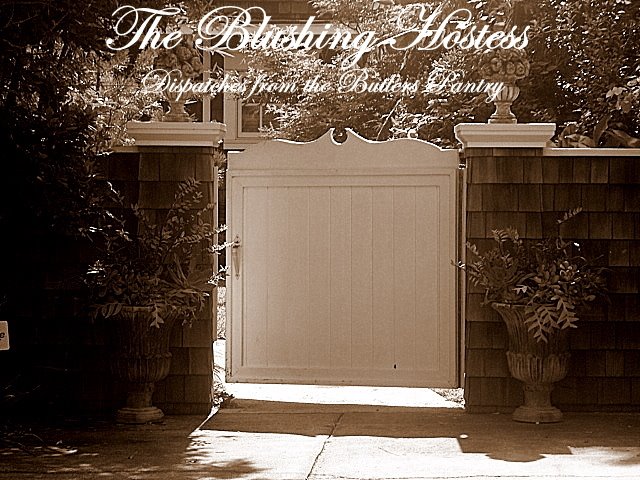Once, before phones were in regular use and a person could be expected to have a conversation with another person face to face, people carried calling cards to leave at the house or business to advise the person upon whom they called that they had missed them but had indeed come by looking to converse. They are the generations-past equivalent of a voicemail message.
According to the revised Amy Vanderbilt Complete Book of Etiquette, the calling card was traditionally left on the small sterling silver tray near the front door of the home where she called. She left her card underneath that of her husband's. "Only on certain occasions, such as calls of condolence or congratulations, or calls on the sick, would a man make an appearance and leave his own card."
I tend to agree with the book's assertion that in these times, you see true calling cards only in very formal diplomatic and military circles. I do still see them, in fact two this year, both from wives of military officers. Whenever I come across them, tucked in a book sent to me by Karrie Ann gently handed to me in order to be able to locate a lovely lady Mary again, or in a big silver bowl after a Junior League meeting, I have to smile. I am very attached to these lovely little cards.
These days, the house, household, and couple can all have cards of their own now more frequently used as gift enclosures and occasionally, and not really correctly, as business cards (limit the information to your name traditionally, or more modernly, add an address. But, this is not an appropriate place for phone numbers or email addresses). The calling or correspondence card is as follows:
Kathleen Ann Daly
Miss Kathleen Ann Daly
Ms. Kathleen Ann Daly
Mrs. Anthony Farley Briggs
Mr. Anthony F. Briggs or Captain Anthony F. Briggs
Mr. Anthony Farley Briggs or Captain Anthony Farley Briggs
For the house: Merryvale, The Briggs Family
For the household: The Briggs Family
For the couple: Mr. and Mrs. Anthony F. Briggs or Captain and Mrs. Anthony F. Briggs
You can, and certainly should, pen a brief message on your card. They can be useful in this way:
- When sending flowers locally, take your card with your note to the florist to be included with the arrangement, rather than use the stock florist card.
- When sending or bringing a gift, use your calling card as the gift enclosure.
- When responding to an informal written invitation, respond on your calling card.
Tips for purchasing calling or correspondence cards:
-These cards should be small, not folded, and suitable only for a couple of lines of handwriting. They should not, however, any longer, be as small as business cards if they are ever to go through the mail. There are minimum size requirements for the postal service now and to be safe, the smallest side should be no smaller than four inches.
- Traditionally, these cards were engraved. However, all manner of card is used now and tastefulness is more dependent on choosing a card, color scheme, and font which creates a card as elegant as the gesture the card attends.
- Keep in mind when selecting stationary that while whimsical themes are lovely, you may find them inappropriate when needing a calling or correspondence card to deal with serious issues: Sickness or death. Choose appropriately for all potential needs.
I recently found a few lovely example which are available from many commercial stationary dealers both brick and mortar and on the internet:

Whitney English at Lemontree Paperie (my current fave)

Pacific Blue at Lemontree Paperie (great for a guy)
 Stacy Clair Boyd at Lemontree Paperie (for a lovely old school prep girly thing)
Stacy Clair Boyd at Lemontree Paperie (for a lovely old school prep girly thing)





1 comment:
Hm, I sadly disagree. I would, naturally, much prefer that people came to call rather than use email or facebook, thus necessitating the appropriate stationary. This, however, is not so much a modern phenomenon. And don't get me started on how I would rather ride my horse over than drive because then I could justify paying for him out of my private accounts on those PCS moves... I find when people use such stationary in the modern era, with the exception of correspondence cards which are very appropriate for all notes, it invariably seems quite like artifice. That is, unless the calling card now functions much like a social card, rather than a business card. It is far more graceful to meet someone and hand them a card with your name, telephone and e-mail versus reaching for your blackberry. I find stationary suits the situation and while I do wish I could pop by and leave my card, name only, in the foyer; times have changed.
Post a Comment